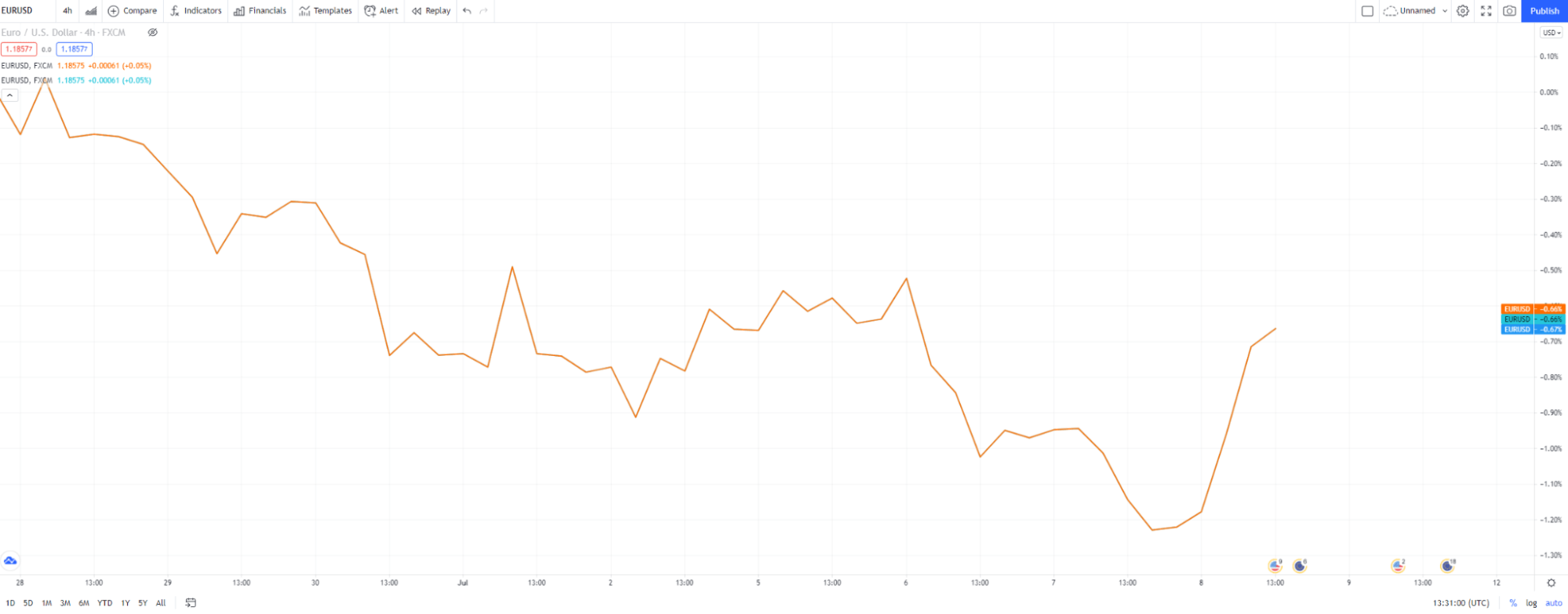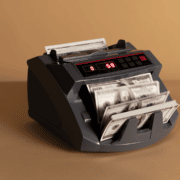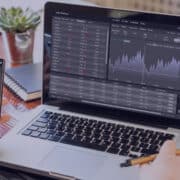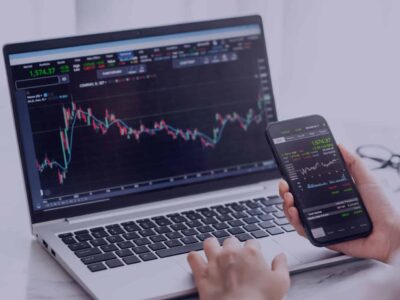If you ever wondered what leverage is, don’t worry; it can be a complicated notion to grasp even for experienced traders.
Forex trading is accessible now more than ever. However, not everyone has the significant capital to invest in trading. Some brokers even allow you to start trading with as little as $100. The downside to small capital is that your chances of increasing your wealth are limited because you must take fewer trades.
Therefore, brokers allow even the traders with small accounts to benefit by offering them leverage. We will explain the concept of leverage and the risks involved.
Overview of the FX
The forex is where buying and selling of currencies take place. It is the largest financial market, and trading volume exceeds $6.6 trillion per day, making it highly liquid. It is operational 24 hours, five days a week.
Retail traders take advantage of the liquidity to make profits either for a passive or consistent income. Due to its liquidity, brokers allow traders to invest a small amount of capital and offer leverage to boost their investment.
What is the margin?
Margin and leverage concepts go together; therefore, we need first to understand what margin is.
Margin is the amount of capital a broker requires you to have to open a position. It is a percentage of your money, and the amount of margin determines your leverage.
The table illustrates how much leverage you can use versus a certain margin percentage. Therefore, if your margin requirement is 0.33%, your maximum leverage is 1:300.
| Leverage | Margin required |
| 1:100 | 1.00% |
| 1:300 | 0.33% |
| 1:500 | 0.20% |
| 1:1000 | 0.10% |
The concept of leverage
In finance, leverage is money borrowed to be used as part of your investment so that you can gain more significant returns.
You can choose certain leverage that enables you to trade with a small amount of money and make more significant profits. However, the risk is that you can make more considerable losses. Therefore, it is necessary to understand how it works.
Here are practical examples:
- If the USD/CAD rate increases by 100 pips from 1.2439 to 1.2539, and your investment were $1000, your profit would have been $10.
- If you choose to use a leverage of 1:100, you are risking $1 to make a $100 profit. Therefore, this leverage boosts your $1000 to $100 000, giving you the ability to make $1000 in profit.
- The same applies if your position would go in a loss, you would then be losing $1000.
Brokers often give high amounts of leverage because traders can manage risk; in addition, the high liquidity of the FX allows you to exit a position if you see that the risk is too high or when you are satisfied with your profits.
What are the risks of excessive leverage?
When using it you can inflate profit with borrowed money, but you run the risk of losing as well. The higher the leverage, the more risk you are taking on your account; note that the risk is not solely due to the leverage as other trading conditions can also influence it.
To fully understand the impact, we will explain using an example of two traders.
Both traders must have a 2% margin of their deposit, and their capital is $10,000 each. Both of them take a sell position on USD/CAD after their analysis confirms it.
- Trader X uses a leverage of 1:50 and sells USD/JPY with $500,000 (50 x $10,000). The USD/JPY rate is 120, and a standard lot is worth $8.30; the value of 5 standard lots is $41.50. If the rate of USD/JPY increases by 100 pips, the loss will be $4150, which equates to a 41.5% loss of capital.
- Now, Trader Y is more cautious and uses a leverage of 1:5 of the same pair. His position is worth $50,000 (5 x $10,000). He takes five standard lots as well; in this case, a loss would equate to $415, which is 4.15% of his capital.
| Trader Y | Trader X | |
| Capital | $10.000 | $10.000 |
| Leverage | 1:05 | 1:50 |
| Value of position | $50.000 | $500.000 |
| Loss of 100 pips |
|
|
| % Loss of capital | 4.15% | 41.15% |
| % Capital remaining | 95.80% | 58.50% |
The table illustrates the difference in leverage and the impact it has on both traders’ accounts. Trader Y used lower leverage and risked less vs. Trader X, who almost lost half his capital.
Here’s a slightly more practical example of leverage
We want to buy five lots of EUR/USD, which have a par value of EUR 500,000 (1 lot = EUR 100,000).
- Purchase price — 1.10000
- Selling price — 1.10250
- Growth — 25 points
- Account balance — 10,000
- Purchased number of lots (contracts) — 5
- Nominal value of the investment 5 x 100,000 — 500,000 EUR
- The required margin for one lot with 1: 100 leverage — 1000 EUR
- The required margin for five lots: 5 x 1000 — 5000 EUR
- Point value 5 x USD 10 — USD 50 (you win or lose $ 50 per pip)
- Profit 25 x 50 — 1250 EUR
- Profitability — 25%
The same, but with the opposite sign, will happen if you lost 25 pips on a EUR/USD trade.
Pros and cons
Let’s weigh the pros and cons.
Pros
- No need for significant investment
Brokers offer different leverage options, and you benefit from using a small investment.
- Benefit from significant profits
Leverage can inflate your earnings, depending on the amount you choose, e.g., using the leverage of 1:500 on a $100 investment can enable you to trade up to $50,000 worth of positions, increasing your profit opportunity ten times.
- Leverage is an interest-free loan
As we explained, leverage is money that the broker lends you, but they do not charge any interest on the loan.
Cons
- More considerable losses
Increased leverage means that you risk losing if the trade goes in the opposite direction.
- Risk of burning all the capital
The risk of leverage is that your account can run out of tradeable margin, which means your losses are so significant that the remaining capital is not sufficient to sustain it. In this case, the broker will issue a margin call and close positions in profit to replenish the margin. If that is not sufficient, you run the risk of losing your capital.
What should novice traders do with a recommended leverage of up to 1 to 10 if there is no free $10,000 and want to trade successfully and make money right now?
- Decide on your trading style. Are you going to trade intraday or catch medium-term trends actively? Or maybe you would like to collect a portfolio and “forget” about it for a while? The longer the horizon of trade transactions, the more the size of the deposit is needed.
- It is necessary to master basic knowledge in technical analysis, to understand the specifics of the market — published news, reports, multipliers, indicators, and other factors that can influence the price.
- Trade only with the money you are willing to lose. Following this rule, you will relieve yourself of unnecessary stress, and trade will become much calmer.
- It is better not to use the entire margin for one trade — better 100 different positions with a minimum lot of 0.01 than one with a size of 1 lot.
- Don’t allow the loss on one position to exceed 2% of the deposit.
- Determine the maximum allowable risk for the number of open positions and monitor compliance with each position’s risks. Keep track of the “level” of the account.
- Do not open a position without a pre-written trading plan. Determine for yourself the entry-level, profit, and loss fixation level, signal to build up the position, and exit the market.
- Keep a trader’s diary. Write down the parameters of the trade. Keeping a journal will make trading more conscious and provide a basis for introspection and learning from your own mistakes.
Final thoughts
Now that you understand leverage, you can see that it can be a beneficial tool to use in trading, but it can have detrimental effects on your trading account if misused. Like everything else in trading, it requires sound technical knowledge and proper risk management.


















Comments